
Wednesday, April 30, 2014
The Stanley Cup Playoffs: It's Ducks VS. Kings!
Bring on the Freeway Series! With the Los Angeles Kings prevailing over the San Jose Sharks, 5-1, in Game 7 at NoCal tonight, L.A. finally set in stone the very first playoff match between two SoCal sports teams (the Kings versus the Anaheim Ducks). I'm not watching Major League Baseball, so I don't know just how well the Dodgers and Anaheim Angels (no, I won't call them the L.A. Angels of Anaheim) are doing right now, so I can't gauge if there's a chance (it's much too early to discuss this, anyway) that there will be a Freeway Series between them during the Fall Classic this October. As for hockey, Game 1 between the Kings and Ducks in Round 2 of the Stanley Cup playoffs will take place this Saturday (at the Honda Center, the Ducks' home arena, in Orange County). Doesn't matter who wins this weekend; either way, it's a great time to be a SoCal sports fan. And I don't think I even need to make a Donald Sterling or Mike D'Antoni reference here... Clippers and Lakers fans can rejoice as well.


Tuesday, April 29, 2014
H.A.L.O. Jump...

Today marks one year since I did a 30,000-foot tandem skydive above Whiteville, Tennesee—courtesy of the awesome folks at HALOJumper.com. This was no doubt one of the coolest experiences of my life... Can't wait to supplement this by winning the lottery one day and affording the money to pay for a trip (which costs more than $200,000) aboard Virgin Galactic's SpaceShipTwo, hah. Anyways, play the video below to see my HALO jump!
Sunday, April 27, 2014
Meme of the Day, Part 2...
To illustrate the reason as to why I don't care much to have a corporate job (though this applies to just about any profession), this funny drawing nicely depicts what most folks go through in an office setting everyday. This pretty much shows why a lot of people that I know personally decided to try starting their own businesses (some succeeded, some didn't) after getting laid off (or worse) from their previous place of employment (usually at a corporation). As for which birds on this flow chart apply to me? Err...no comment. Oh, and I got this meme through one of my cousins—who posted this on Facebook. Good show... That is all.

Image courtesy of Mandatory Fan Page - Facebook.com

Image courtesy of Mandatory Fan Page - Facebook.com
Friday, April 25, 2014
Meme of the Day...
Either way, I'd probably emerge from the front door with a shotgun in hand. Just kidding... I don't own a shotgun.


Thursday, April 17, 2014
Kepler Does It Again!
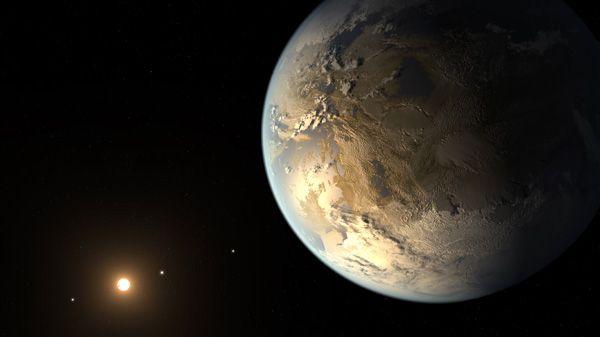
NASA Ames / SETI Institute / JPL - Caltech
NASA's Kepler Discovers First Earth-Size Planet In The 'Habitable Zone' of Another Star (Press Release)
Using NASA's Kepler Space Telescope, astronomers have discovered the first Earth-size planet orbiting a star in the "habitable zone" -- the range of distance from a star where liquid water might pool on the surface of an orbiting planet. The discovery of Kepler-186f confirms that planets the size of Earth exist in the habitable zone of stars other than our sun.
While planets have previously been found in the habitable zone, they are all at least 40 percent larger in size than Earth and understanding their makeup is challenging. Kepler-186f is more reminiscent of Earth.
"The discovery of Kepler-186f is a significant step toward finding worlds like our planet Earth," said Paul Hertz, NASA's Astrophysics Division director at the agency's headquarters in Washington. "Future NASA missions, like the Transiting Exoplanet Survey Satellite and the James Webb Space Telescope, will discover the nearest rocky exoplanets and determine their composition and atmospheric conditions, continuing humankind's quest to find truly Earth-like worlds."
Although the size of Kepler-186f is known, its mass and composition are not. Previous research, however, suggests that a planet the size of Kepler-186f is likely to be rocky.
"We know of just one planet where life exists -- Earth. When we search for life outside our solar system we focus on finding planets with characteristics that mimic that of Earth," said Elisa Quintana, research scientist at the SETI Institute at NASA's Ames Research Center in Moffett Field, Calif., and lead author of the paper published today in the journal Science. "Finding a habitable zone planet comparable to Earth in size is a major step forward."
Kepler-186f resides in the Kepler-186 system, about 500 light-years from Earth in the constellation Cygnus. The system is also home to four companion planets, which orbit a star half the size and mass of our sun. The star is classified as an M dwarf, or red dwarf, a class of stars that makes up 70 percent of the stars in the Milky Way galaxy.
"M dwarfs are the most numerous stars," said Quintana. "The first signs of other life in the galaxy may well come from planets orbiting an M dwarf."
Kepler-186f orbits its star once every 130-days and receives one-third the energy from its star that Earth gets from the sun, placing it nearer the outer edge of the habitable zone. On the surface of Kepler-186f, the brightness of its star at high noon is only as bright as our sun appears to us about an hour before sunset.
"Being in the habitable zone does not mean we know this planet is habitable. The temperature on the planet is strongly dependent on what kind of atmosphere the planet has," said Thomas Barclay, research scientist at the Bay Area Environmental Research Institute at Ames, and co-author of the paper. "Kepler-186f can be thought of as an Earth-cousin rather than an Earth-twin. It has many properties that resemble Earth."
The four companion planets, Kepler-186b, Kepler-186c, Kepler-186d, and Kepler-186e, whiz around their sun every four, seven, 13, and 22 days, respectively, making them too hot for life as we know it. These four inner planets all measure less than 1.5 times the size of Earth. The next steps in the search for distant life include looking for true Earth-twins -- Earth-size planets orbiting within the habitable zone of a sun-like star -- and measuring the their chemical compositions. The Kepler Space Telescope, which simultaneously and continuously measured the brightness of more than 150,000 stars, is NASA's first mission capable of detecting Earth-size planets around stars like our sun.
Ames is responsible for Kepler's ground system development, mission operations, and science data analysis. NASA's Jet Propulsion Laboratory in Pasadena, Calif., managed Kepler mission development. Ball Aerospace & Technologies Corp. in Boulder, Colo., developed the Kepler flight system and supports mission operations with the Laboratory for Atmospheric and Space Physics at the University of Colorado in Boulder. The Space Telescope Science Institute in Baltimore archives, hosts and distributes Kepler science data. Kepler is NASA's 10th Discovery Mission and was funded by the agency's Science Mission Directorate.
The SETI Institute is a private, nonprofit organization dedicated to scientific research, education and public outreach. The mission of the SETI Institute is to explore, understand and explain the origin, nature and prevalence of life in the universe.
Source: NASA.Gov
****
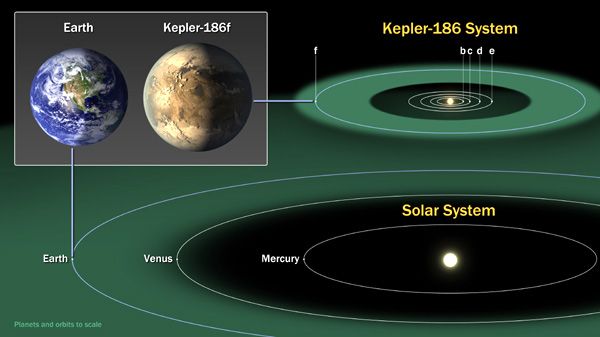
NASA Ames / SETI Institute / JPL - Caltech
Labels:
Exoplanets,
James Webb Space Telescope,
Kepler,
Press Releases
Tuesday, April 15, 2014
Rise of the Blood Moon...
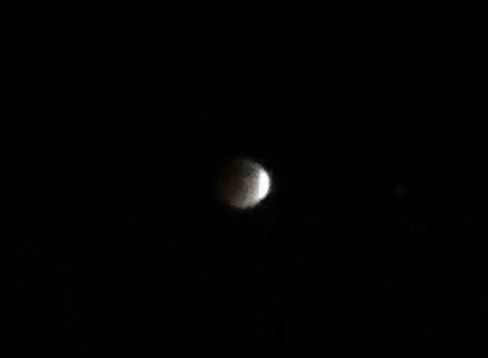
So late last night, I stood outside my house and endured constant bug bites to my legs as I waited for the total lunar eclipse to occur above Los Angeles (and pretty much all of North America and even Hawaii as well). Using my new Android RAZR phone, I took these two photos...with the one below showing the 'Blood Moon' with Mars hovering high above it (in the upper right-hand corner). All I can say is, this serves as motivation for me to buy a much nicer camera that I can use to take awesome pictures of future celestial events. Speaking of which, click on this link to see images that I took of the May 2012 annular solar eclipse. Carry on.
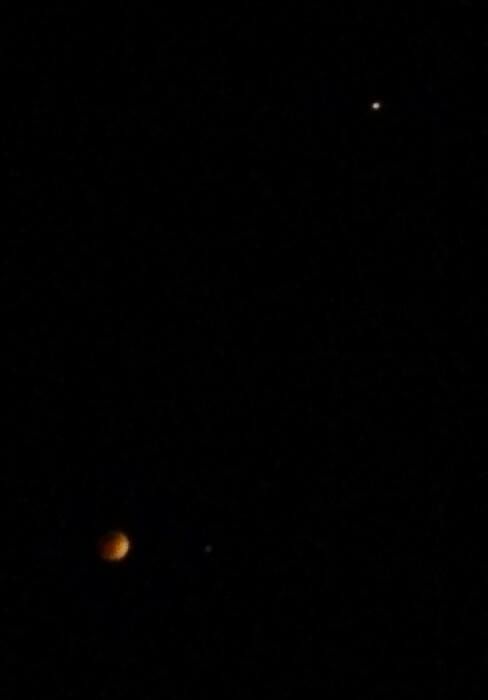
Monday, April 14, 2014
Cassini Update...
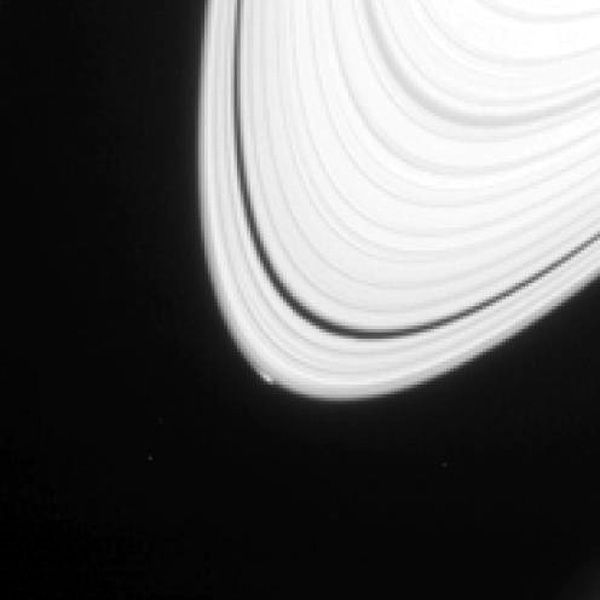
NASA / JPL - Caltech / Space Science Institute
NASA Cassini Images May Reveal Birth of New Saturn Moon (Press Release)
NASA's Cassini spacecraft has documented the formation of a small icy object within the rings of Saturn that may be a new moon, and may also provide clues to the formation of the planet's known moons.
Images taken with Cassini's narrow angle camera on April 15, 2013 show disturbances at the very edge of Saturn's A ring -- the outermost of the planet's large, bright rings. One of these disturbances is an arc about 20 percent brighter than its surroundings, 750 miles (1,200 kilometers) long and 6 miles (10 kilometers) wide. Scientists also found unusual protuberances in the usually smooth profile at the ring's edge. Scientists believe the arc and protuberances are caused by the gravitational effects of a nearby object. Details of the observations were published online today (April 14, 2014) by the journal Icarus.
The object is not expected to grow any larger, and may even be falling apart. But the process of its formation and outward movement aids in our understanding of how Saturn's icy moons, including the cloud-wrapped Titan and ocean-holding Enceladus, may have formed in more massive rings long ago. It also provides insight into how Earth and other planets in our solar system may have formed and migrated away from our star, the sun.
"We have not seen anything like this before," said Carl Murray of Queen Mary University of London, and the report's lead author. "We may be looking at the act of birth, where this object is just leaving the rings and heading off to be a moon in its own right."
The object, informally named Peggy, is too small to see in images so far. Scientists estimate it is probably no more than about a half mile in diameter. Saturn's icy moons range in size depending on their proximity to the planet -- the farther from the planet, the larger. And many of Saturn's moons are comprised primarily of ice, as are the particles that form Saturn's rings. Based on these facts, and other indicators, researchers recently proposed that the icy moons formed from ring particles and then moved outward, away from the planet, merging with other moons on the way.
"Witnessing the possible birth of a tiny moon is an exciting, unexpected event," said Cassini Project Scientist Linda Spilker, of NASA's Jet Propulsion Laboratory (JPL) in Pasadena, Calif. According to Spilker, Cassini's orbit will move closer to the outer edge of the A ring in late 2016 and provide an opportunity to study Peggy in more detail and perhaps even image it.
It is possible the process of moon formation in Saturn's rings has ended with Peggy, as Saturn's rings now are, in all likelihood, too depleted to make more moons. Because they may not observe this process again, Murray and his colleagues are wringing from the observations all they can learn.
"The theory holds that Saturn long ago had a much more massive ring system capable of giving birth to larger moons," Murray said. "As the moons formed near the edge, they depleted the rings and evolved, so the ones that formed earliest are the largest and the farthest out." The Cassini-Huygens mission is a cooperative project of NASA, the European Space Agency and the Italian Space Agency. JPL, a division of the California Institute of Technology, manages the mission for NASA's Science Mission Directorate in Washington.
Source: NASA.Gov
Sunday, April 13, 2014
Friday, April 11, 2014
Another Awesome Discovery in Space(?)...

NASA / JPL - Caltech
Faraway Moon or Faint Star? Possible Exomoon Found (Press Release - April 10)
Titan, Europa, Io and Phobos are just a few members of our solar system's pantheon of moons. Are there are other moons out there, orbiting planets beyond our sun?
NASA-funded researchers have spotted the first signs of an "exomoon," and though they say it's impossible to confirm its presence, the finding is a tantalizing first step toward locating others. The discovery was made by watching a chance encounter of objects in our galaxy, which can be witnessed only once.
"We won't have a chance to observe the exomoon candidate again," said David Bennett of the University of Notre Dame, Ind., lead author of a new paper on the findings appearing in the Astrophysical Journal. "But we can expect more unexpected finds like this."
The international study is led by the joint Japan-New Zealand-American Microlensing Observations in Astrophysics (MOA) and the Probing Lensing Anomalies NETwork (PLANET) programs, using telescopes in New Zealand and Tasmania. Their technique, called gravitational microlensing, takes advantage of chance alignments between stars. When a foreground star passes between us and a more distant star, the closer star can act like a magnifying glass to focus and brighten the light of the more distant one. These brightening events usually last about a month.
If the foreground star -- or what astronomers refer to as the lens -- has a planet circling around it, the planet will act as a second lens to brighten or dim the light even more. By carefully scrutinizing these brightening events, astronomers can figure out the mass of the foreground star relative to its planet.
In some cases, however, the foreground object could be a free-floating planet, not a star. Researchers might then be able to measure the mass of the planet relative to its orbiting companion: a moon. While astronomers are actively looking for exomoons -- for example, using data from NASA's Kepler mission - so far, they have not found any.
In the new study, the nature of the foreground, lensing object is not clear. The ratio of the larger body to its smaller companion is 2,000 to 1. That means the pair could be either a small, faint star circled by a planet about 18 times the mass of Earth -- or a planet more massive than Jupiter coupled with a moon weighing less than Earth.
The problem is that astronomers have no way of telling which of these two scenarios is correct.
"One possibility is for the lensing system to be a planet and its moon, which if true, would be a spectacular discovery of a totally new type of system," said Wes Traub, the chief scientist for NASA's Exoplanet Exploration Program office at NASA's Jet Propulsion Laboratory, Pasadena, Calif., who was not involved in the study. "The researchers' models point to the moon solution, but if you simply look at what scenario is more likely in nature, the star solution wins."
The answer to the mystery lies in learning the distance to the circling duo. A lower-mass pair closer to Earth will produce the same kind of brightening event as a more massive pair located farther away. But once a brightening event is over, it's very difficult to take additional measurements of the lensing system and determine the distance. The true identity of the exomoon candidate and its companion, a system dubbed MOA-2011-BLG-262, will remain unknown.
In the future, however, it may be possible to obtain these distance measurements during lensing events. For example, NASA's Spitzer and Kepler space telescopes, both of which revolve around the sun in Earth-trailing orbits, are far enough away from Earth to be great tools for the parallax-distance technique.
The basic principle of parallax can be explained by holding your finger out, closing one eye after the other, and watching your finger jump back and forth. A distant star, when viewed from two telescopes spaced really far apart, will also appear to move. When combined with a lensing event, the parallax effect alters how a telescope will view the resulting magnification of starlight. Though the technique works best using one telescope on Earth and one in space, such as Spitzer or Kepler, two ground-based telescopes on different sides of our planet can also be used.
Meanwhile, surveys like MOA and the Polish Optical Gravitational Experiment Lensing Experiment, or OGLE, are turning up more and more planets. These microlensing surveys have discovered dozens of exoplanets so far, in orbit around stars and free-floating. A previous NASA-funded study, also led by the MOA team, was the first to find strong evidence for planets the size of Jupiter roaming alone in space, presumably after they were kicked out of forming planetary systems. (See http://www.jpl.nasa.gov/news/news.php?release=2011-147).
The new exomoon candidate, if real, would orbit one such free-floating planet. The planet may have been ejected from the dusty confines of a young planetary system, while keeping its companion moon in tow.
The ground-based telescopes used in the study are the Mount John University Observatory in New Zealand and the Mount Canopus Observatory in Tasmania.
Additional observations were obtained with the W.M. Keck Observatory in Mauna Kea, Hawaii; European Southern Observatory's VISTA telescope in Chile; the Optical Gravitational Lens Experiment (OGLE) using the Las Campanas Observatory in Chile; the Microlensing Follow-Up Network (MicroFUN) using the Cerro Tololo Interamerican Observatory in Chile; and the Robonet Collaboration using the Faulkes Telescope South in Siding Spring, Australia.
Source: Jet Propulsion Laboratory
****
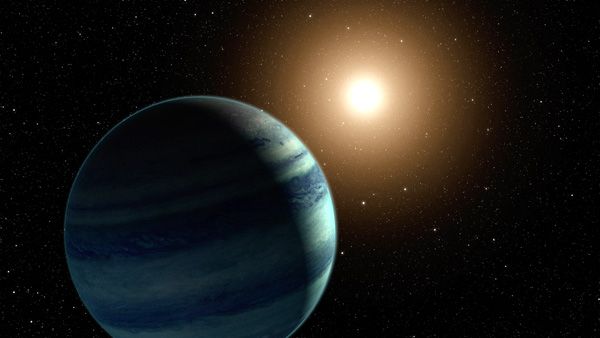
NASA / JPL - Caltech
Thursday, April 10, 2014
OSIRIS-REx: One Step Closer to Bennu...

NASA / Goddard / Chris Meaney
Construction to Begin on NASA Spacecraft Set to Visit Asteroid in 2018 (Press Release)
NASA's team that will conduct the first U.S. mission to collect samples from an asteroid has been given the go-ahead to begin building the spacecraft, flight instruments and ground system, and launch support facilities.
This determination was made Wednesday after a successful Mission Critical Design Review (CDR) for NASA’s Origins Spectral Interpretation Resource Identification Security Regolith Explorer (OSIRIS-REx). The CDR was held at Lockheed Martin Space Systems Company in Littleton, Colo., April 1-9. An independent review board, comprised of experts from NASA and several external organizations, met to review the system design.
"This is the final step for a NASA mission to go from paper to product,” said Gordon Johnston, OSIRIS-REx program executive at NASA Headquarters, Washington, DC. “This confirms that the final design is ready to start the build-up towards launch.”
OSIRIS-REx is scheduled to launch in the fall of 2016, rendezvous with the asteroid Bennu in 2018 and return a sample of it to Earth in 2023. The spacecraft carries five instruments that will remotely evaluate the surface of Bennu. After more than a year of asteroid reconnaissance, the spacecraft will collect samples of at least 2 ounces (60 grams) and return them to Earth for scientists to study.
"Successfully passing mission CDR is a major accomplishment, but the hard part is still in front of us -- building, integrating and testing the flight system in support of a tight planetary launch window," said Mike Donnelly, OSIRIS-REx project manager at NASA's Goddard Space Flight Center in Greenbelt, Md.
Key mission objectives focus on finding answers to basic questions about the composition of the very early solar system and the source of organic materials and water that made life possible on Earth. The mission will also aid NASA’s asteroid initiative and support the agency's efforts to understand the population of potentially hazardous near-Earth objects and characterize those suitable for future asteroid exploration missions. The initiative brings together the best of NASA's science, technology and human exploration efforts to achieve President Obama's goal of sending humans to an asteroid by 2025.
"The OSIRIS-REx team has consistently demonstrated its ability to present a comprehensive mission design that meets all requirements within the resources provided by NASA," said Dante Lauretta, principal investigator from the University of Arizona, Tucson. "Mission CDR was no exception. This is a great team. I know we will build a flight and ground system that is up to the challenges of this ambitious mission."
In January, NASA invited people around the world to submit their names to be etched on a microchip aboard the spacecraft. After submitting their name, participants are able to download and print a certificate documenting their participation in the OSIRIS-REx mission. The campaign is open until September 30, 2014.
Goddard Space Flight Center will provide overall mission management, systems engineering, and safety and mission assurance for OSIRIS-REx. Lockheed Martin Space Systems in Denver will build the spacecraft. OSIRIS-REx is the third mission in the agency's New Frontiers Program. NASA's Marshall Space Flight Center in Huntsville, Ala., manages New Frontiers for the agency's Science Mission Directorate in Washington. The University of Arizona leads OSIRIS-REx and provides the camera system and science processing and operations center.
For more information about the OSIRIS-REx mission, visit:
and
To participate in "Messages to Bennu," go to:
Source: NASA.Gov
****
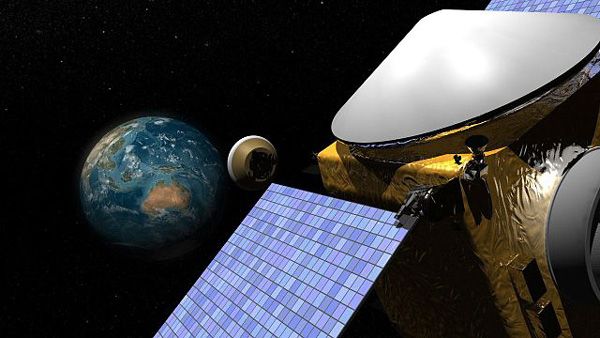
NASA Goddard Space Flight Center
Tuesday, April 08, 2014
Quotes of the Day, Part 2...
-― Steve Maraboli
-― Steve Maraboli
-― Jarod Kintz, I Want
-― Treasure Tatum
-― Jayson Engay
-― Coco J. Ginger
Monday, April 07, 2014
Quotes of the Day...
-― Jeff Thomas
-― David Foster Wallace, Infinite Jest
-― Beth Revis, Across the Universe
-― Corinne Bailey Rae
-― Mark Haddon, The Curious Incident of the Dog in the Night-Time
-― Michael Ondaatje, The Cat's Table
Saturday, April 05, 2014
24: Live Another Day...
Only one month from today! Jack Bauer and his trusty (ex-)Counter Terrorist Unit colleague Chloe O'Brian return to FOX in the highly-anticipated mini-series...which makes its television premiere on May 5. All I can say is, Chloe's death stare in the photo below looks just as lethal as the Glock that Jack is holding. I'm totally taking Mondays off from work to see terrorists once again getting their (fatal) comeuppance at the hands of Bauer. And word is that 24: Live Another Day, depending on how it does on TV this summer, may even get a Season 2 next year. Let's all hope so!

Photo courtesy of 24 - Facebook.com

Photo courtesy of 24 - Facebook.com
Thursday, April 03, 2014
Cassini Update...
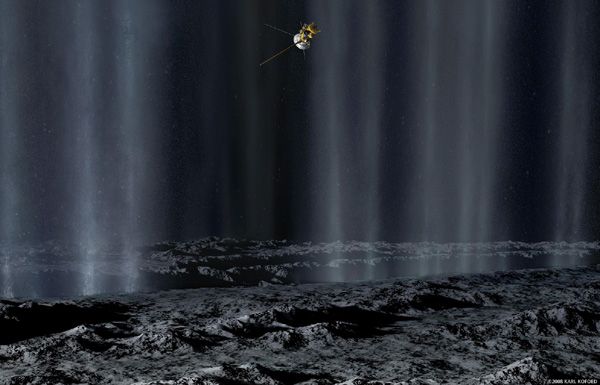
© 2008 Karl Kofoed
NASA Space Assets Detect Ocean inside Saturn Moon (Press Release)
NASA's Cassini spacecraft and Deep Space Network have uncovered evidence Saturn's moon Enceladus harbors a large underground ocean of liquid water, furthering scientific interest in the moon as a potential home to extraterrestrial microbes.
Researchers theorized the presence of an interior reservoir of water in 2005 when Cassini discovered water vapor and ice spewing from vents near the moon's south pole. The new data provide the first geophysical measurements of the internal structure of Enceladus, consistent with the existence of a hidden ocean inside the moon. Findings from the gravity measurements are in the Friday, April 4 edition of the journal Science.
"The way we deduce gravity variations is a concept in physics called the Doppler Effect, the same principle used with a speed-measuring radar gun," said Sami Asmar of NASA's Jet Propulsion Laboratory in Pasadena, Calif., a coauthor of the paper. "As the spacecraft flies by Enceladus, its velocity is perturbed by an amount that depends on variations in the gravity field that we're trying to measure. We see the change in velocity as a change in radio frequency, received at our ground stations here all the way across the solar system."
The gravity measurements suggest a large, possibly regional, ocean about 6 miles (10 kilometers) deep, beneath an ice shell about 19 to 25 miles (30 to 40 kilometers) thick. The subsurface ocean evidence supports the inclusion of Enceladus among the most likely places in our solar system to host microbial life. Before Cassini reached Saturn in July 2004, no version of that short list included this icy moon, barely 300 miles (500 kilometers) in diameter.
"This then provides one possible story to explain why water is gushing out of these fractures we see at the south pole," said David Stevenson of the California Institute of Technology, Pasadena, one of the paper's co-authors.
Cassini has flown near Enceladus 19 times. Three flybys, from 2010 to 2012, yielded precise trajectory measurements. The gravitational tug of a planetary body, such as Enceladus, alters a spacecraft's flight path. Variations in the gravity field, such as those caused by mountains on the surface or differences in underground composition, can be detected as changes in the spacecraft's velocity, measured from Earth.
The technique of analyzing a radio signal between Cassini and the Deep Space Network can detect changes in velocity as small as less than one foot per hour (90 microns per second). With this precision, the flyby data yielded evidence of a zone inside the southern end of the moon with higher density than other portions of the interior.
The south pole area has a surface depression that causes a dip in the local tug of gravity. However, the magnitude of the dip is less than expected given the size of the depression, leading researchers to conclude the depression's effect is partially offset by a high-density feature in the region, beneath the surface.
"The Cassini gravity measurements show a negative gravity anomaly at the south pole that however is not as large as expected from the deep depression detected by the onboard camera," said the paper's lead author, Luciano Iess of Sapienza University of Rome. "Hence the conclusion that there must be a denser material at depth that compensates the missing mass: very likely liquid water, which is seven percent denser than ice. The magnitude of the anomaly gave us the size of the water reservoir."
There is no certainty the subsurface ocean supplies the water plume spraying out of surface fractures near the south pole of Enceladus, however, scientists reason it is a real possibility. The fractures may lead down to a part of the moon that is tidally heated by the moon's repeated flexing, as it follows an eccentric orbit around Saturn.
Much of the excitement about the Cassini mission's discovery of the Enceladus water plume stems from the possibility that it originates from a wet environment that could be a favorable environment for microbial life.
"Material from Enceladus' south polar jets contains salty water and organic molecules, the basic chemical ingredients for life," said Linda Spilker, Cassini's project scientist at JPL. "Their discovery expanded our view of the 'habitable zone' within our solar system and in planetary systems of other stars. This new validation that an ocean of water underlies the jets furthers understanding about this intriguing environment."
The Cassini-Huygens mission is a cooperative project of NASA, the European Space Agency and the Italian Space Agency. JPL manages the mission for NASA's Science Mission Directorate in Washington.
Source: Jet Propulsion Laboratory
****
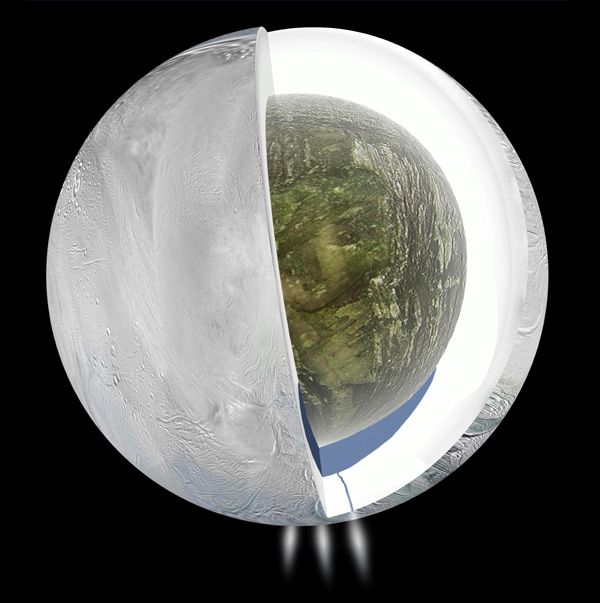
NASA / JPL - Caltech
Tuesday, April 01, 2014
Quotes of the Day...
-― Edna St. Vincent Millay
-― Haruki Murakami, South of the Border, West of the Sun
-― Lisa Kleypas, Again the Magic
-― Stephanie Laurens, The Edge of Desire
-― Robert Goolrick, The End of the World as We Know It: Scenes from a Life
-― Jonathan Safran Foer, Everything Is Illuminated
Subscribe to:
Posts (Atom)

